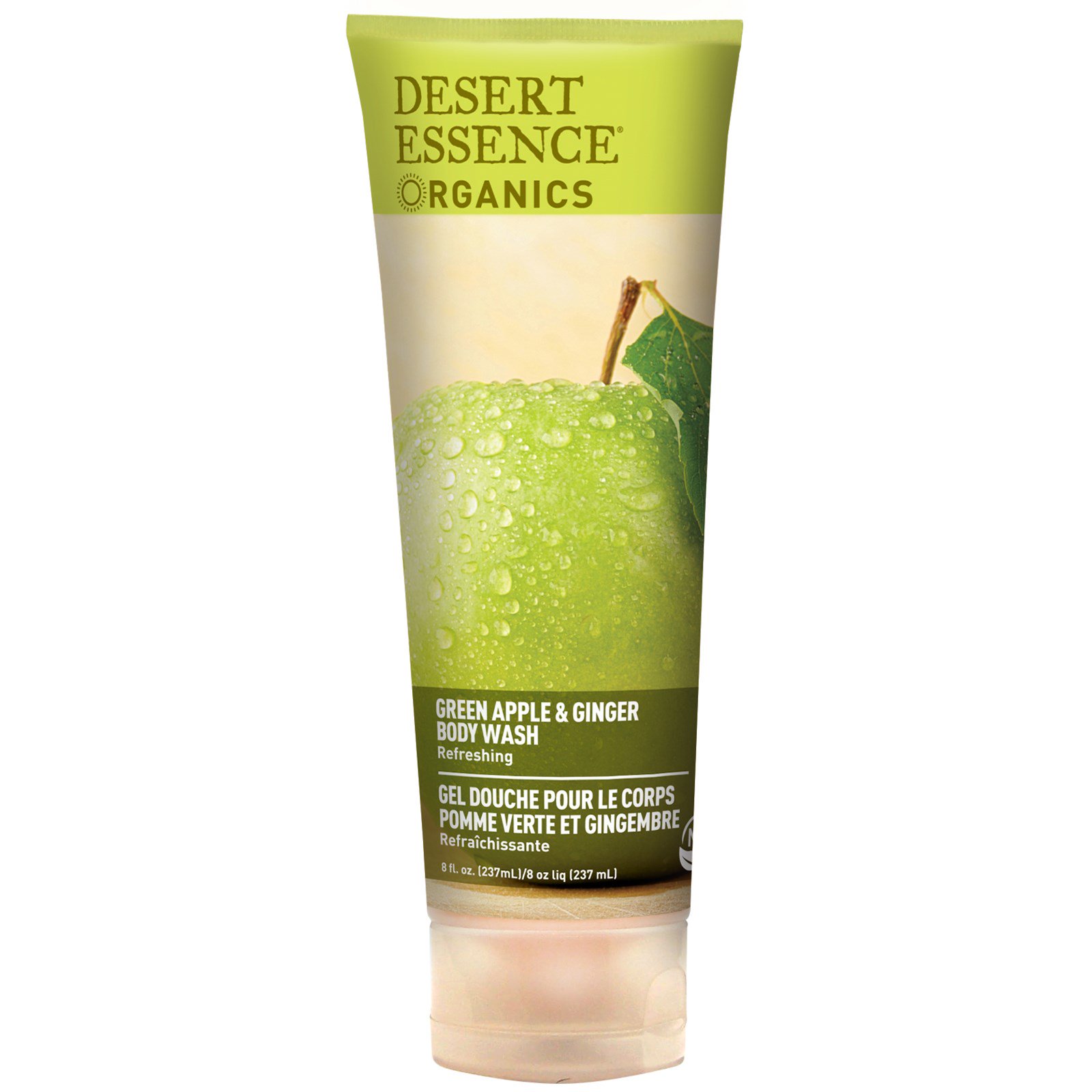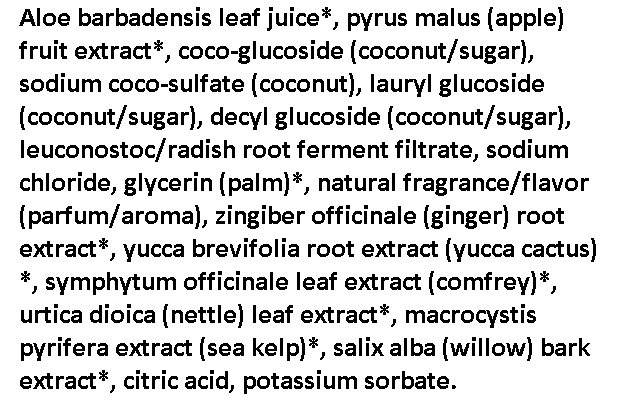| Aloe Barbadensis Leaf Juice | Aloe Barbadensis leaf juice can soothe skin and serve as an anti-inflammatory. It can be efficiently used topically, because of its burn healing effects, scar reducing and wounds healing properties. |
|---|
| Pyrus malus (apple) fruit extract | Apples are loaded with vitamin C. Almost half of an apple’s vitamin C content is just under the skin, so it’s a good idea to eat apples with their skins. |
|---|
| Coco-glucoside | Works as a surfactant, foaming agent, conditioner and emulsifier. It helps increase the foaming capacity of a solution, and is particularly useful in hair care products, in which it has the ability to smooth out the hair structure and increase manageability. |
|---|
| Sodium coco-sulfate | Sodium dodecyl sulfate (SDS or NaDS), sodium laurilsulfate or sodium lauryl sulfate (SLS) is an organic compound with the formula CH3(CH2)11SO4Na. |
|---|
| Lauryl glucoside | Lauryl glucoside is a surfactant used in cosmetics. It is a glycoside produced from glucose and lauryl alcohol. |
|---|
| Decyl glucoside | Decyl glucoside is a mild non-ionic surfactant used in cosmetic formularies including baby shampoo and in products for individuals with a sensitive skin |
|---|
| Leuconostoc/radish root ferment filtrate | Derived from radishes fermented with Leuconostoc kimchii, a lactic acid bacteria that has traditionally been used to make kimchi, this product consists of an isolated peptide that is secreted from the bacteria during the fermentation process that has been shown to have antimicrobial benefits. |
|---|
| Sodium chloride | Sodium chloride /ˌsoʊdiəm ˈklɔːraɪd/, also known as salt or halite, is an ionic compound with the chemical formula NaCl, representing a 1:1 ratio of sodiumand chloride ions. |
|---|
| Glycerin | Glycerin is what is called a humectant. Glycerin helps maintain the skin’s water balance on an intercellular level. Glycerin in lotions or other skin care products can help prevent or combat dry skin. |
|---|
| Natural fragrance/flavor | Natural flavors are created from anything that can be eaten (i.e animals and vegetables), even if those edible things are processed in the lab to create flavorings. |
|---|
| Zingiber officinale | Ginger has many medicinal uses. The fresh or dried rhizome is used in oral or topical preparations to treat a variety of ailments, while the essential oil is applied topically as an analgesic. Evidence suggests ginger is most effective against nausea and vomiting associated with surgery, vertigo, travel sickness and morning sickness. |
|---|
| Yucca Brevifolia Root Extract | Folic acid has also been connected to improving the overall skin and eye health in humans, mainly through its antioxidant activities. |
|---|
| Symphytum Officinale Extract | Symphytum Officinale is used as a tea for upset stomach, ulcers, heavy menstrual periods, diarrhea, bloody urine, persistent cough, painful breathing (pleuritis), bronchitis, cancer, and chest pain (angina). It is also used as a gargle for gum disease and sore throat. |
|---|
| Urtica dioica | Urination problems related to an enlarged prostate. These problems include frequent urination, painful urination, inability to urinate, and irritable bladder. |
|---|
| Macrocystis pyrifera extract | Algin is used to lower cholesterol levels and to reduce the amount of heavy chemicals including strontium, barium, tin, cadmium, manganese, zinc, and mercury that are taken up by the body. Algin is also used for the prevention and treatment of high blood pressure. |
|---|
| Salix Alba | Willow bark acts a lot like aspirin, so it is used for pain, including headache, muscle pain, menstrual cramps, rheumatoid arthritis (RA), osteoarthritis, gout, and a disease of the spine called ankylosing spondylitis. |
|---|
| Citric acid | Powerful Antioxidant - May Help Fight Cancer and Cardiovascular Diseases |
|---|
| Potassium Sorbate | Potassium sorbate’s use as an antimicrobial preservative prevents the growth of mold, bacteria and fungi in cheese, dried meats, baked goods, jellies and syrups. |
|---|




Reviews
There are no reviews yet.